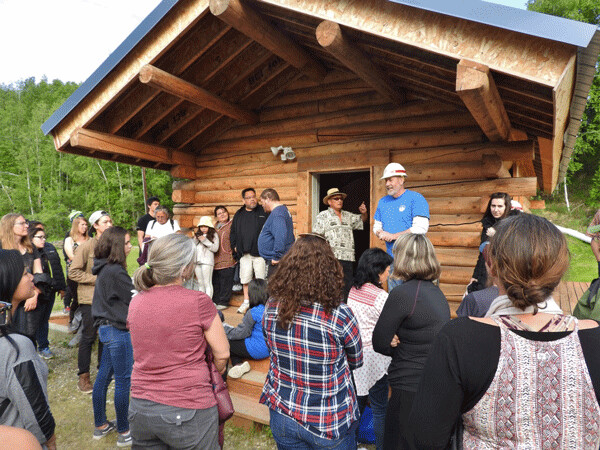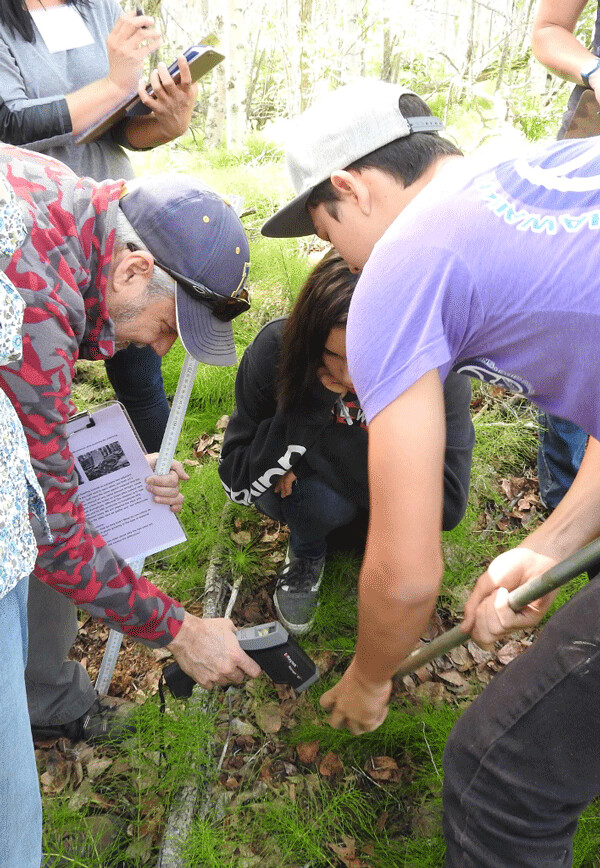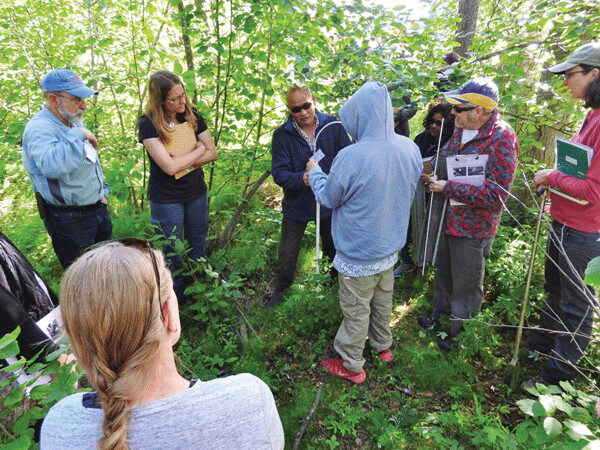Climate Change and My Community



Dr. Katie Spellman’s left eyebrow arched into an exclamation point above the wide frames of her glasses. “What happens in the Arctic doesn’t stay in the Arctic.” The room full of educators and youth leaders from rural and indigenous communities around Alaska and the Lower 48 chuckled in agreement. This eclectic and passionate group of people had converged on the International Arctic Research Center at the University of Alaska Fairbanks (UAF) from Alaskan communities north of the Arctic Circle, down on the Kenai Peninsula, and from the town of North Pole. For the first time at this workshop, educators from out of state had also come from Oregon, Montana, Turtle Mountain Reservation in North Dakota, and Hawaii. We were all here for a week-long workshop called “Climate Change and My Community.”
To emphasize her point, Katie highlighted some of the connections we’d all just drawn on a huge concept map. Rising temperatures topped the board, but a web of lines connected to issues like thawing permafrost, diminishing sea ice, declining snow cover, vegetation shifts, and melting glaciers. Within the map were also less obvious connections: expanding marine shipping, increasing access to resources (like oil and gas), enhanced agriculture and forestry, and loss of hunting culture.
This course, run through the Arctic and Earth SIGNS program, is designed to help educators and community leaders learn more about all of those “impacts and feedbacks of a warming Arctic, braiding multiple ways of knowing and observing climate change from their elders, from satellites, and from their own observations, and making a difference on a climate change issue important to their community.” Learning about the far-reaching effects of climate change without the support of a community can sometimes send people into paralysis and despair. In this workshop, upbeat mantras like “there’s a leader in every chair,” and “your observations are truth,” seemed well-placed to inspire people toward hope and action.
“Why should everybody care about melting permafrost?” continued Katie. For Alaskans, the answer is as practical as frost-heaved roads, tilting buildings, and failing infrastructure. For us from the Lower 48, the carbon cycle is key. Permafrost is soil that’s been below freezing for more than two years. It contains lots of stored carbon in the form of dead-but-not-decomposed plants and animals. If the soil warms and decomposition restarts, then significant amounts of carbon dioxide and methane will escape into the atmosphere. These additional greenhouse gases will increase warming, which will lead to more melting permafrost and more carbon release. It’s a positive feedback loop with global impacts.

To better understand permafrost, we took a field trip to the US Army Corps of Engineers Permafrost Tunnel Research Facility. Excavation of a hillside during the gold rush allowed researchers to tunnel straight into a frozen hill in 1963. We oohed and aahed over frozen mammoth bones, a mat of ancient sedges still showing a hint of green, roots dangling from the ceiling, and lenses and wedges of ice. Permafrost—when it stays frozen—is so stable that the tunnel does not need additional supports. On the other hand, thawing permafrost is about as unstable as you can get.
For some in the class, permafrost is more than a field trip. It has a direct impact on their lives. Ken Stenek has been the high school science teacher in the town of Shishmaref for 19 years. This town of about 700 people is located in northwestern Alaska on a barrier island that’s only one-quarter of a mile wide in places. Tilting utility poles are a visible sign of unstable ground due to thawing permafrost in Shishmaref. That’s just the beginning, though. The effects of climate change are so dramatic here that this little town has its own Wikipedia page where the main topic is global warming.
Thawing permafrost in combination with declining sea ice means that their roads are at risk, their coastline is falling into the Chukchi Sea, and the airport landing strip—their main connection to the world—is at risk of becoming inaccessible. Despite the intense storm damage this little town has sustained, they’ve been unable to get FEMA money because of a lack of data. Ken is working to change that.

A few years ago, Ken worked with Dr. Kenji Yoshikawa, a professor from UAF, to install a frost tube. This ingenious device consists of a PVC pipe sunk several meters into the ground and strung with a clear plastic tube filled with colored water. To monitor the depth to permafrost, you can simply pull up the tube and measure where water meets ice. One student raised their hand to ask Kenji, “Is permafrost thawing even in undisturbed areas?” He replied, “It is becoming THE disturbance in some areas.”
Many places seem to be near a tipping point, where they are just barely staying frozen. These frost tubes are useful monitoring tools. NASA agrees. Several years ago, they worked with Kenji to add frost tubes to their GLOBE protocols. The Global Learning and Observations to Benefit the Environment (GLOBE) program is an international (118 countries!) science and education effort that provides students and the public worldwide with the opportunity to participate in data collection and the scientific process. Teachers gain access to tools, supplies, sampling protocols, lesson plans and support. Kids participate in meaningful, hands-on science, and NASA uses the data to ground-truth its satellites. Learning about the various GLOBE protocols was a major part of the workshop. As the week progressed, teachers were making plans for their students to study the timing of green-up and berry ripening, snow depth, rainfall, air temperature, soil moisture, cloud cover, and more.
Near the end of the week we took a few minutes at the beginning of class to revisit our concept map. Students integrated layers of new learning, and the web of connections grew even messier. “There is an immense amount of knowledge in this room,” one of the facilitators declared. Very soon there will be an immense amount of knowledge—as well as hope and action—outside of this room, too. After all, “what happens in the Arctic doesn’t stay in the Arctic.”
Emily is in Alaska for the summer! Follow the journey in this column, and see additional stories and photos on her blog: http://cablemuseum.org/connect/.
For 50 years, the Cable Natural History Museum has served to connect you to the Northwoods. Come visit us in Cable, WI! Our new exhibit: “Bee Amazed!” is open.
